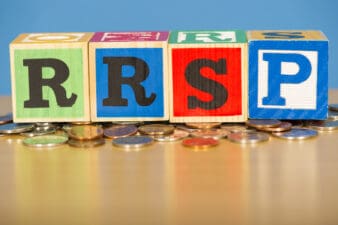The Registered Retirement Savings Plan (RRSP) is an excellent way to put cash aside for retirement. But a lot of Canadians may not realize that it also has significant benefits you can use today. While there are several I could name, today I’m going to focus on its deduction benefits to your tax return. Using this benefit, you can double your RRSP contribution.
First off, the deduction rule
The deduction rule for your RRSP is pretty simple. For every dollar you contribute to your RRSP, that’s taken off of your income for your tax return. However, there are certainly some rules surrounding your contributions. That mainly comes down to your contribution room. In general, the Canada Revenue Agency calculates your contribution limit as either the lesser of 18% of your earned income from the year before or the annual RRSP limit. That limit includes unused contribution room or pension adjustments.
Instead of attempting the calculation yourself, you can find your contribution limit easily by looking at the bottom of your Notice of Assessment. And note, if you go over, it’s not like your Tax-Free Savings Account (TFSA). While you won’t be penalized, that extra cash won’t come off of your taxable income either.
The big benefit
Let’s say you made $100,000 last year. That means your taxable income is in the tax bracket that applies to a $100,000 salary. However, if you’ve been contributing to your RRSP, you can bring down your taxable income into another tax bracket altogether.
There are a lot of calculators online to help you figure out how to bring your taxes down to the next tax bracket. But I’ll provide a little outline for someone who lives in Ontario.
| Federal tax bracket | Federal tax rates | Ontario tax bracket | Ontario tax rates |
|---|---|---|---|
| $49,020 or less | 15% | $45,142 or less | 5.05% |
| $49,021 to $98,040 | 20.5% | $45,143 to $90,287 | 9.15% |
| $98,041 to $151,978 | 26% | $90,288 to $150,000 | 11.16% |
| $151,979 to $216,511 | 29% | $150,001 to $220,000 | 12.16% |
| More than $216,511 | 33% | More than $220,000 | 13.16%% |
So, as you can see, someone making $100,000 would be taxed at 26% by the federal government and 11.16% by the Ontario government. But by contributing $9,712 to your RRSP, the tax rates can be brought down to 20.5% and 9.15%, respectively. That means you’ve brought your taxes down from $37,160, to $29,150! That’s almost your entire contribution!
Double your contribution
So, let’s say you’ve put aside $9,712 in total throughout the year. That’s $809.33 per month. What you can do is take those savings from your contribution and put it towards next year, topping off the remaining $1,700. Now, you’re already ahead for next year, and that could potentially bring you into an even lower tax bracket.
Where should you put all that cash? For an RRSP, you, of course, want something long term. And if you want to create even more cash, I’d recommend putting it towards a high-dividend payer. Since you don’t want to worry about it, I would consider an exchange-traded fund like BMO Global High Dividend Covered Call (TSX:ZWB).
You get access to a diversified portfolio of global, high-dividend payers. Right now, it offers a 6.51% dividend yield and is down 5.5%. That’s a far better performance that the TSX right now, even during this market correction.
So, there you have it. Put your cash aside for the future, save on taxes, and make even more cash down the line. In fact, that doubled contribution of $19,424 would bring in $1,457 in annual income alone!








